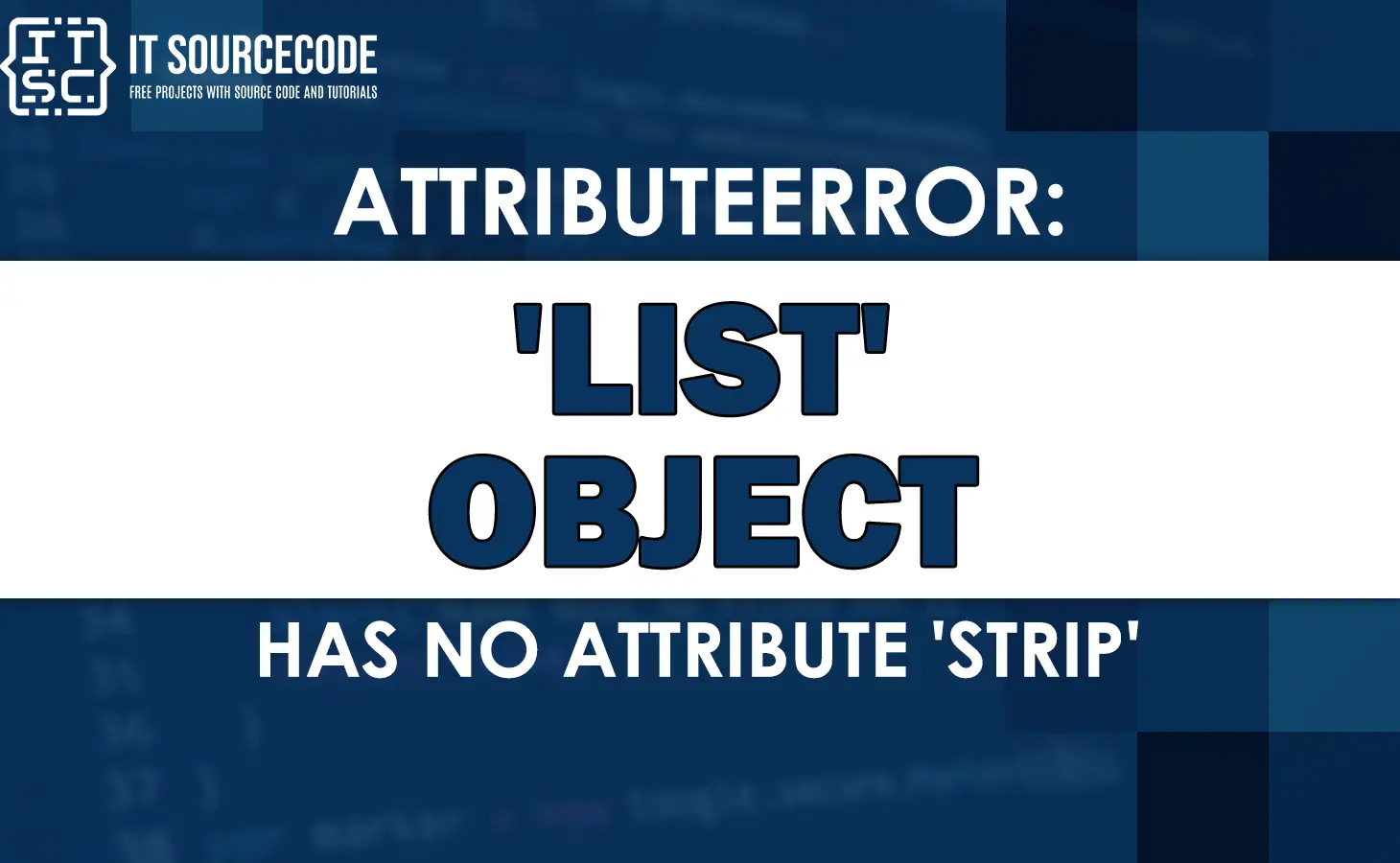Encountering this “attributeerror: ‘list’ object has no attribute ‘strip'” error, makes you frustrated and gives you a headache, right? Especially if you are new to coding and don’t know how to fix it.
That is why we created this tutorial in order to lessen your problem and resolve the error in no time. You just have to read and follow the instructions carefully because, in this article, you’ll get the solution that you need.
But first, let us understand what this error is all about and why it occurs.
This is because if we understand this error thoroughly, we could easily fix the “attributeerror: list object has no attribute strip” error.
What is “attributeerror: ‘list’ object has no attribute ‘strip'”
If you encounter the “attributeerror: ‘list’ object has no attribute ‘strip’,” it means that you are attempting to call the strip() method on a list object that does not have that attribute.
What is strip() method?
A strip() is a built-in string method that removes whitespace characters from the beginning and end of a string. By default, strip() removes all whitespace characters, including spaces, tabs, and newlines.
Why does “attributeerror: ‘list’ object has no attribute ‘strip'” occur?
The “attributeError: ‘list’ object has no attribute ‘strip'” is an error message that occurs when you are trying to call the strip() method on a list object.
This error is raised because strip() is a method that is specific to “string” objects, and lists do not have this attribute.
In addition to that, this error message is indicating that the “list” object that you are trying to access doesn’t have a strip() method, that is why it will throw an error
Solutions for “attributeerror: ‘list’ object has no attribute ‘strip'”
The following are effective solutions you can use to easily fix the error in no time.
Solution 1: Convert the list to a string
Convert the list to a string before calling the strip() method. Here is an example code.
my_list = [' Hello ', ' Welcome to Itsourcecode '] my_string = ''.join(my_list) my_stripped_string = my_string.strip() print(my_list) # ' Hello ', ' Welcome to Itsourcecode ' print(my_string) # Hello Welcome to Itsourcecode print(my_stripped_string) # Hello Welcome to Itsourcecode
Output:
[' Hello ', ' Welcome to Itsourcecode '] Hello Welcome to Itsourcecode Hello Welcome to Itsourcecode
As you can see in the output, it shows the original list, the joined string with whitespace, and the stripped string with no whitespace.
Solution 2: Use list comprehension
my_list = [' Hello ', ' Welcome to Itsourcecode ']
my_stripped_list = [s.strip() for s in my_list]
print(my_stripped_list)
Output:
['Hello', 'Welcome to Itsourcecode']
The output shows that the strip() method has been applied to each string in my_list, resulting in a new list my_stripped_list with the whitespace removed from each string.
Solution 3: Use the replace() method
If you do not need to strip whitespace from your list items, you can use a different method to achieve your desired outcome. For example, you could use the replace() method to remove specific characters from each list item.
my_list = [' Hello ', ' Welcome to Itsourcecode ']
# Remove all whitespace characters from each list item
my_list_no_whitespace = [s.replace(' ', '') for s in my_list]
# Remove all occurrences of the letter 'l' from each list item
my_list_no_l = [s.replace('l', '') for s in my_list]
# Print the original list and the modified lists
print("Original list:", my_list)
print("List with no whitespace:", my_list_no_whitespace)
print("List with no 'l':", my_list_no_l)Output:
Original list: [' Hello ', ' Welcome to Itsourcecode '] List with no whitespace: ['Hello', 'WelcometoItsourcecode'] List with no 'l': [' Heo ', ' Wecome to Itsourcecode ']
The output shows that we have successfully removed whitespace and the letter ‘l’ from each list item using the replace() method.
Solution 4: Check your code
The first thing you should do is double-check your code to make sure you are not trying to call the strip() method on a list object.
Related Articles for Python Errors
- Attributeerror: nonetype object has no attribute find
- Attributeerror: ‘nonetype’ object has no attribute ‘cursor’
- Attributeerror: entrypoints object has no attribute get
Conclusion
By executing the different solutions that this article has given, you can easily fix the “attributeerror: ‘list’ object has no attribute ‘strip'” error message when working with TensorFlow.
We are hoping that this article provides you with a sufficient solution; if yes, we would love to hear some thoughts from you.
Thank you very much for reading to the end of this article. Just in case you have more questions or inquiries, feel free to comment, and you can also visit our website for additional information.

